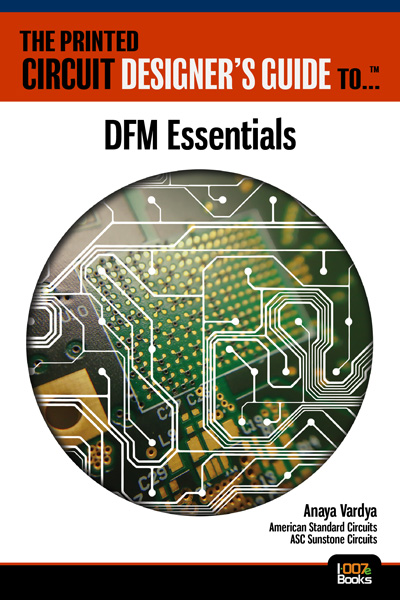-

- News
- Books
Featured Books
- design007 Magazine
Latest Issues
Current Issue
Power Integrity
Current power demands are increasing, especially with AI, 5G, and EV chips. This month, our experts share “watt’s up” with power integrity, from planning and layout through measurement and manufacturing.

Signal Integrity
If you don’t have signal integrity problems now, you will eventually. This month, our expert contributors share a variety of SI techniques that can help designers avoid ground bounce, crosstalk, parasitic issues, and much more.

Proper Floor Planning
Floor planning decisions can make or break performance, manufacturability, and timelines. This month’s contributors weigh in with their best practices for proper floor planning and specific strategies to get it right.
- Articles
- Columns
- Links
- Media kit
||| MENU - design007 Magazine
MANA Develops Ferroelectric-ferromagnetic Materials for Next-generation Electronics
January 7, 2025 | PRNewswireEstimated reading time: 1 minute
Researchers at the Research Center for Materials Nanoarchitectonics (MANA) have proposed a method to create ferroelectric-ferromagnetic materials, opening doors to advancing spintronics and memory devices.
In 1831, Michael Faraday discovered the fundamental connection between electricity and magnetism, demonstrating that a changing magnetic field induces electric current in a conductor.
In a recent study, MANA researchers have proposed a method for designing ferroelectric-ferromagnetic (FE-FM) materials, which exhibit both ferroelectric and ferromagnetic properties, enabling the manipulation of magnetic properties using electric fields and vice versa. Such materials are highly promising for spintronics and memory devices. The advantage of FE-FM materials, extremely rare in nature, is their ability to achieve the cross-control by relatively low electric and magnetic fields. The study, led by Principal Researcher Igor Solovyev from MANA, NIMS, included contributions from Dr. Ryota Ono from MANA, NIMS, and Dr. Sergey Nikolaev from the University of Osaka, Japan.
Ferroelectric materials possess a permanent electric polarization, usually arising from ion displacement in their crystalline lattice and resulting in the formation of charged electric dipoles, which align in the same direction. The key feature of ferromagnetic materials is the uncompensated magnetic moment produced by electron spins and orbital motion. Combining both properties in a single material is challenging since the ion displacement enabling ferroelectricity can disrupt the magnetic ordering needed for ferromagnetism. Similarly, the ferromagnetic alignment of magnetic moments is not sufficient for breaking the spatial inversion symmetry required for producing ferroelectricity.
The authors of the current study proposed that antiferro orbital ordering, driven by the Kugel-Khomskii mechanism, where electrons tend to occupy alternating orbitals, can promote both ferromagnetic interactions and break the inversion symmetry. When tested on VI3, a van der Waals ferromagnet with a honeycomb structure, this ordering resulted in an FE-FM ground state.
"By properly arranging occupied atomic orbitals in a solid, one can make the material not only ferromagnetic but also ferroelectric," says Dr. Solovyev, highlighting the potential of this approach for developing next-generation electronic devices based on multiferroic materials and ferroelectric ferromagnets.
Testimonial
"Your magazines are a great platform for people to exchange knowledge. Thank you for the work that you do."
Simon Khesin - Schmoll MaschinenSuggested Items
SEMI Foundation Honors Applied Materials at SEMICON West with 2025 Excellence in Achievement Award for Talent Development
11/04/2025 | SEMIThe SEMI Foundation announced it recognized Applied Materials, Inc. with the Excellence in Achievement Award at SEMICON West 2025 in Phoenix, Arizona, honoring the company’s outstanding leadership and collaboration in building the next generation of semiconductor talent.
On the Line With… Ultra HDI, Episode 8: “Materials, Up and Coming Capabilities,” Now Available
11/05/2025 | I-Connect007I-Connect007 is excited to announce the release of the eighth episode of its 12-part podcast series, On the Line With… American Standard Circuits: Ultra HDI. In this episode, “Materials, Up and Coming Capabilities,” host Nolan Johnson sits down with resident expert John Johnson, Director of Quality and Advanced Technology at American Standard Circuits, to discuss how material selection influences the Ultra HDI (UHDI) manufacturing process.
New Podcast Episode: “Bonding Innovation: How Adhesives and Coatings Are Powering the Next Generation of Electronics”
11/05/2025 | I-Connect007I-Connect007 has released of a new episode in its Voices of the Industry podcast series, titled “Bonding Innovation: How Adhesives and Coatings Are Powering the Next Generation of Electronics.” Hosted by Nolan Johnson, this insightful discussion dives deep into the evolving world of adhesives and coatings—materials that are redefining performance, reliability, and design in modern electronics manufacturing. Dymax's Doug Katze, a leading expert in adhesive technologies, delivers what can only be described as a master class on how these critical materials are adapting to meet rapidly changing market demands.
Sealed for Survival: Potting Electronics for the Toughest Environments
10/29/2025 | Beth Massey, MacDermid Alpha Electronics SolutionsElectronics deployed in harsh conditions face relentless threats from vibration, impact, chemical contaminants, airborne pollutants, and moisture, conditions that can quickly lead to failure without robust protection. Potting, the process of encapsulating electronics in a protective polymer, is a widely used strategy to safeguard devices from both environmental and mechanical hazards.
Driving Innovation: Mechanical and Optical Processes During Rigid-flex Production
10/28/2025 | Kurt Palmer -- Column: Driving InnovationRigid-flex printed circuit boards are a highly effective solution for placing complex circuitry in tight, three-dimensional spaces. They are now indispensable across a range of industries, from medical devices and aerospace to advanced consumer electronics, helping designers make the most efficient use of available space. However, their unique construction—combining rigid and flexible materials—presents a fundamental challenge for PCB manufacturers.


